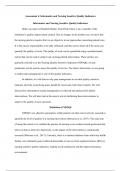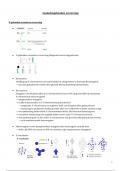Presentation
NURSFPX 4040 Assessment 4: Informatics and Nursing Sensitive Quality Indicators
- Course
- NURSFPX4040
- Institution
- 123 University
This assessment requires you to prepare an 8–10 minute audio training tutorial (with optional video) for new nurses on the importance of nursing-sensitive quality indicators. To successfully prepare for your assessment, you will need to complete the following preparatory activities: • Select a...
[Show more]




